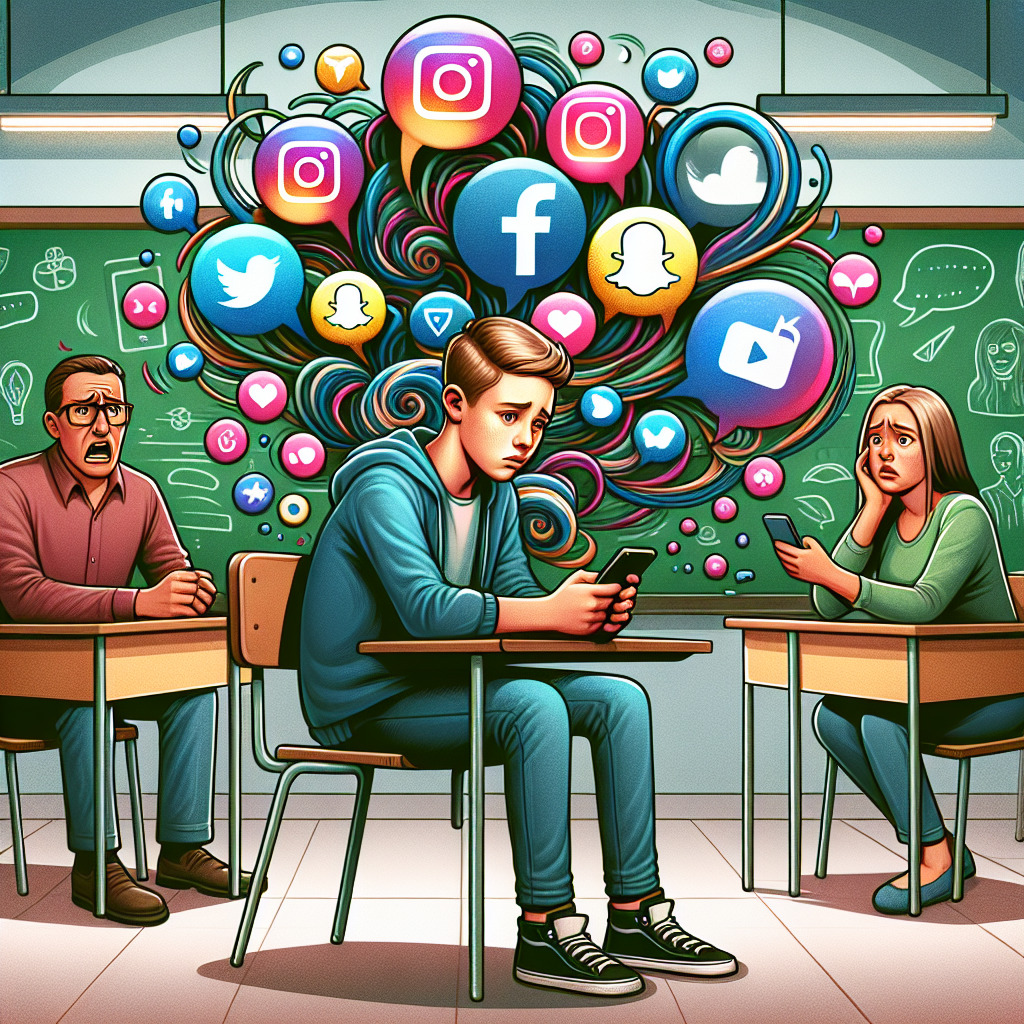Key Takeaways
The Rise in Social Media Use Among Teens
In recent years, the rise in social media use among teenagers has become a significant topic of discussion, especially for parents and educational institutions. Today, social media platforms have become integral parts of teenage life, shaping the way teens communicate, learn, and interact with the world. As this trend grows, it has sparked a debate about its implications on adolescents’ mental health, academic performance, and overall well-being. This post will explore these implications, offering insights for both schools and parents on how to address the challenges of increasing social media use.
The Impact on Mental Health
The link between social media usage and mental health among teens is increasingly observed. Teens are spending unprecedented amounts of time on platforms like Instagram, TikTok, and Snapchat, exposing themselves to various psychological risks. A significant concern is the impact on teens’ self-esteem and body image. The constant bombardment of idealized images and lifestyles can lead to feelings of inadequacy, anxiety, and depression.
Research indicates that excessive social media use might contribute to feelings of loneliness, isolation, and even cyberbullying experiences. It’s crucial for parents and educators to recognize these risks and work towards mitigating them by promoting a more balanced and mindful use of social media.
Academic Performance and Social Media
Social media can also have a profound impact on teens’ academic performance. While these platforms can be valuable tools for learning and collaboration, they also carry the risk of distraction. Many students struggle to balance their time between studying and social media engagement, which can lead to diminished academic results. The ability to access social media 24/7 means that study hours can easily bleed into social media hours, affecting concentration and productivity.
To combat these issues, schools can integrate digital literacy programs that help students develop time management skills and discernment about online content. Encouraging tech-free zones and times might also aid in reducing the distraction potential of social media.
The Role of Parents and Schools
Both parents and schools have pivotal roles in helping teens develop healthy social media habits. Open communication and guidance are key to fostering a supportive environment where teens feel comfortable discussing their online activities and the emotions these activities evoke.
Parental Guidance
Parents can play an active role by setting boundaries around social media use. This might include establishing designated times for social media use, monitoring the platforms their teenagers are on, and discussing the content they encounter. Encouraging offline activities, such as sports or hobbies, can provide teens with a break from online spaces and foster real-world interactions.
In addition, parents should strive to model healthy social media habits themselves. Demonstrating balanced use and positive online engagement can set a strong example for teens to emulate.
School Initiatives
Schools can complement parental efforts by creating policies that promote healthy social media use. Educators can integrate lessons on digital citizenship into the curriculum, teaching students how to navigate social media responsibly. By covering topics such as privacy, digital footprints, and the impact of online behavior, schools can equip students with the knowledge they need to engage safely and positively on these platforms.
Furthermore, schools can offer support services, like counseling, for students struggling with social media-related issues. Providing a safe space for teens to talk about their online experiences can prove invaluable in managing the potential negative effects of social media.
Establishing Balanced Tech Habits
Encouraging teenagers to develop balanced technology habits is crucial for their development. This involves finding a healthy equilibrium between online interactions and offline activities. Here are some practical steps to consider:
- Limit Screen Time: Establish daily screen time limits to ensure balanced use of tech devices.
- Promote Offline Activities: Encourage participation in physical activities, social events, and hobbies to foster real-world connections.
- Use Technology for Learning: Guide teens in utilizing social media and technology for educational purposes, such as joining study groups or following educational channels.
- Encourage Critical Thinking: Teach teens to critically assess the content they encounter online and be aware of the potential for misinformation.
Conclusion
The increasing use of social media among teens presents both opportunities and challenges. While these platforms offer new avenues for connection and learning, they also bring potential risks to teens’ mental health and academic performance. Parents and schools must work together to guide teens toward developing healthy social media habits. By fostering open communication, setting boundaries, and encouraging a balance between online and offline activities, adults can help teens navigate this digital age with resilience and awareness. Through joint efforts, the negative impacts of escalating social media usage can be mitigated, enabling teens to thrive in both their virtual and real lives.

